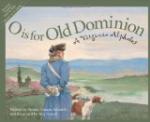The buildings, in the early days of wood and later of brick, were plainly rectangular. The later ones were usually two stories high with steep-pitched roofs. Some of the dwellings, or dwellings and public buildings, were built together in rows to save in the cost of construction. Probably most of the homes had “hort yards” and gardens. The colonists were not content with having about them the native flowers and fruits and those that they brought from England; but they made persistent efforts for years to grow in their gardens oranges, lemons, pomegranates, and pineapples.
Usually there was not much going on in old James Towne, but periodically the place was enlivened by the sessions of the General Assembly and of the Court. At such times the planters and their following gathered in; and then doubtless there were stirring days in the village capital of “His Majesty’s Colony of Virginia.” Barges of the river planters were tied alongshore, and about the “tavernes” were horses, carts and a very few more pretentious vehicles. Many of the people on the streets were in showy dress; though only the governor, councillors, and heads of “Hundreds” were allowed to wear gold on their clothes.
James Towne, in her later days, seems to have had a “taverne” or two even when she had scarcely anything else; and doubtless these “alehouses” were the centres of life in those bustling court and assembly days. For not only was deep drinking a trait of the times, but many of the sessions both of the Assembly and of the Court were held in the “tavernes.” Three or four State-houses were built; but with almost suspicious regularity they burned down, and homeless Assembly and Court betook themselves and the affairs of the colony to the inns. There, in the ruddy glow of the great fireplaces, the judges could sit comfortably and dispense justice tempered with spirits.
So life in James Towne went on until the village had completed almost a hundred years of existence. But this was accomplished only by the most strenuous efforts. When at last, in 1699, the long struggle was given up and the seat of government was removed to Williamsburg, nothing but utter dissolution was left for James Towne.
The fated little village had played its part. Through untold suffering and a woeful cost of human life, it had fought on until England obtained a firm hold in America—a hold that was to make the New World essentially Anglo-Saxon. Then this pioneer colony’s mission was ended. It was not destined to have any place in the great nation that its struggle had made possible. One by one the lights in the poor little windows flickered and went out. The deserted hearthstones grew cold. Abandoned and forgotten, the pitiful hamlet crumbled away.




